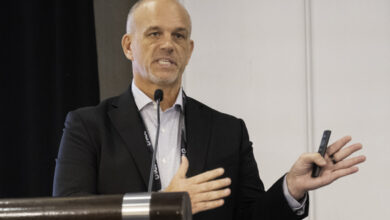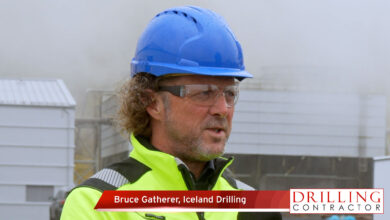HSE&T Corner: Human-centered design pushes reliability, safety for offshore drilling
By Linda Hsieh, Managing Editor

American anthropologist Margaret Mead once said, “What people say, what people do, and what they say they do are entirely different things.” As the drilling industry increasingly looks to the field of human factors to help improve safety and performance, this understanding will become a critical factor to success.
At Transocean, the company is using the concept of human-centered design to guide the development of a new subsea-related technology. This design process recognizes the inherent unreliability of the human being but tries to improve human performance by changing its interaction with the environment.
“Human-centered design is the discipline of generating solutions to problems through the act of making something new, where the activity is driven by the needs, desires and context of the people for whom we’re designing,” said Kevin Hoffman, Director of Engineering at MAYA Design. Mr Hoffman made a joint presentation with Jose Gutierrez, Transocean Director of Technology and Innovation, at the 2016 OTC in Houston on 5 May. The presentation focused on the product’s design process rather than the product itself, which remains under development and was only described as subsea related.
The team that was put together for this project was multidisciplinary, with offshore drilling experts, visual designers, software engineers and researchers all working together. Among the first steps for this team was going to offshore rigs – visiting with the end users in the context of their actual work environment. “We wanted to go out to the rig and really understand what’s happening, what impacts the way they operate day to day, and look for little things that they might not tell us about,” Mr Hoffman said.
The information that was collected was used to create “personas,” which are conceptual archetypes that express the characteristics of the user. “They’re not stereotypes, and they’re not generalizations,” Mr Hoffman said. Personas depict the “typical” stakeholder, and they are useful for understanding the mindset of employees when they go to work on a typical day.
The team then built a working prototype of the product interface, following general design principles such as minimizing cognitive load. This may be achieved by reducing the amount of information that the user needs to keep in their head. “We want to anticipate their needs – provide information to the user when they need it and not flood them with too much information when they don’t need it,” Mr Hoffman said.
Once a prototype was built, the team brought it to users for testing. Users were asked to perform their normal tasks while the design team measured their efficiency and effectiveness in completing those tasks. They were then asked to fill out a survey based on the System Usability Scale (SUS). This consists of a 10-question survey with five response options from “strongly agree” to “strongly disagree.” The goal was to measure users’ satisfaction and expectation of the usability of the interface.
Because the design process was iterative, three rounds of usability testing were done over a period of eight to nine months. Design updates were made in between each round of testing. “In the first round, we had a wide range of response, from as low as 25 to as high as 85” on a 100-point scale, Mr Hoffman explained. The average score was 62.
The second round of testing averaged 69, and scores ranged between 50 and 92.5. “By the third round of usability testing, our average was 86, with two perfect scores of 100,” Mr Hoffman said. Further, all scores were at or above the published average of 68 for the SUS. “Over the course of the three tests, we’ve improved the overall usability satisfaction by 40%… We’re really pleased that we were able to achieve that, but there’s still room to grow. This system is not out there yet.”
Mr Hoffman emphasized that human-centered design is not something that needs to be done separately from routine engineering processes. It simply augments those traditional processes by “giving more situational awareness and guides operators into the tasks they want and need performed.” DC
For more details, see OTC 26931, “Human Factors and Organizational Management – Can We Fix the Mindset? Modernizing Drilling with Human-Centered Designs.”




